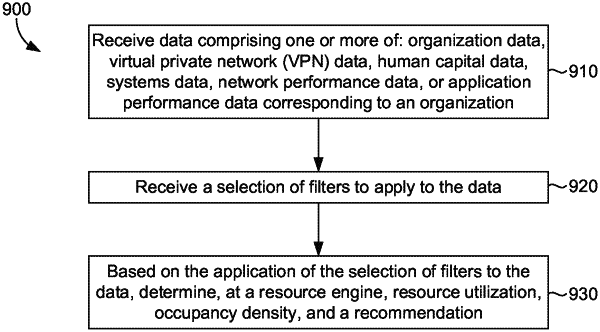| CPC G06Q 10/06315 (2013.01) [G05B 15/00 (2013.01); G05B 2219/2614 (2013.01); G06F 1/3206 (2013.01); G06Q 10/063118 (2013.01); G06Q 10/109 (2013.01)] | 28 Claims |

|
1. One or more computer storage media having computer-executable instructions embodied thereon that, when executed by a computer, causes the computer to initiate operations comprising:
receiving, at a resource engine of a resource system, data comprising:
first data from a VPN-data server and corresponding to one or more locations of an enterprise wide computer network;
second data from a systems-management-data server and corresponding to a network of devices at the one or more locations; and
third data from a resource-capital-data server and corresponding to resource users at the one or more locations,
the receiving based on a script collecting the first, second, and third data:
(a) at respective first, second, and third intervals that differ at least partially; and
(b) via corresponding application programming interfaces (APIs);
transforming and storing at least a portion of the data at a database associated with the resource engine;
receiving, from an electronic interface generated by the resource engine, a selection of filters to apply to the data;
based on applying the selection of filters to the data, determining, at the resource engine, a current resource utilization identifying resource consumption by local resource users and by remote resource users; and
based at least on the current resource utilization, dynamically reallocating or configuring at least a portion of resources associated with power, physical network connectivity, physical network performance, lighting, heating, or cooling.
|